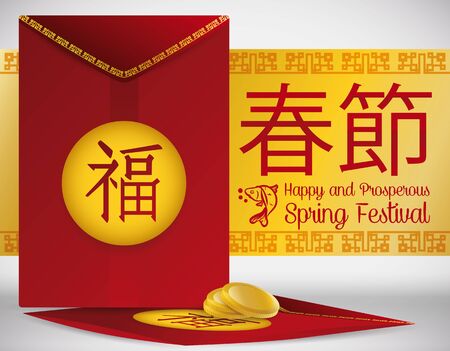Introduction to Feng Shui and British Garden Culture
Feng Shui, an ancient Chinese practice rooted in the harmonious arrangement of spaces, has been guiding people towards prosperity and well-being for thousands of years. Its central tenet lies in the balance of natural energies—known as “Qi”—to foster health, happiness, and fortune. In recent years, these principles have found resonance far beyond their Eastern origins, making their way into Western landscaping traditions, including those of the British Isles. Traditional British gardens, with their ordered layouts and deep reverence for nature’s beauty, share surprising affinities with Feng Shui’s approach to spatial harmony. Both cultures value serenity, a sense of flow, and careful placement of features to enhance both practical use and aesthetic pleasure. The coming together of Feng Shui philosophy and British garden design offers a unique pathway: one that intertwines historical sensibility with modern aspirations for prosperity through mindful outdoor planning.
2. Fundamental Feng Shui Principles for Outdoor Spaces
Applying Feng Shui to British gardens means understanding and adapting its core concepts to the unique characteristics of local landscapes. At the heart of Feng Shui is the belief that energy, or Qi, flows through our environments, influencing wellbeing, prosperity, and harmony. When designing garden paths, appreciating how Qi moves—gently curving rather than sharply turning—is essential for encouraging positive energy to meander and nourish outdoor spaces.
Energy Flow (Qi) in British Gardens
Qi prefers to travel smoothly, avoiding abrupt angles or dead ends. In the context of a British garden, this translates into winding paths that echo natural lines rather than rigid, straight walkways. Such layouts not only respect traditional English garden aesthetics but also facilitate a gentle circulation of energy, believed in Feng Shui to promote vitality and abundance for household members.
Placement and Direction: Aligning with the Landscape
The positioning of paths is another cornerstone of effective Feng Shui. Paths should guide visitors naturally from the entrance towards focal points such as seating areas or water features. The direction a path faces also matters; for instance, a main path leading from the front gate towards the house should avoid pointing directly at the door—known as “poison arrow” energy—but should instead approach with a soft curve. This can be especially meaningful in British gardens where boundaries are often marked by hedgerows or stone walls.
Table 1: Key Placement Considerations for British Garden Paths
| Principle | Traditional Feng Shui Advice | British Garden Adaptation |
|---|---|---|
| Path Shape | Curved or meandering forms preferred over straight lines | S-shaped gravel or flagstone paths among beds and lawns |
| Main Entrance Path | Avoids direct alignment with doors; approaches gently | Offset path with low box hedges or perennial borders |
| Transitions & Junctions | No sharp corners; smooth transitions between areas | Circular patios at junctions; use stepping stones around trees/shrubs |
| Flow Towards Focal Points | Paths lead to gathering spaces or features like ponds/benches | Sightlines towards summer houses, birdbaths, or herb gardens |
The Yin-Yang Balance: Harmony in Materials and Planting
The principle of yin and yang—balancing opposites—is integral to creating harmony outdoors. In practice, this means combining hard landscaping (yang) with lush planting (yin). For example, pairing robust York stone paving with soft mosses or ferns provides visual and energetic balance suited to the British climate. Similarly, shady areas (yin) can be enlivened with light-coloured flowers or reflective surfaces (yang), ensuring no area feels stagnant or overwhelming.

3. Designing Curved Garden Paths the British Way
British gardens are renowned for their gentle informality and a sense of relaxed order, making them an ideal canvas for harmonising traditional Feng Shui principles with local landscaping traditions. When it comes to garden paths, Feng Shui advocates for softly flowing lines that encourage positive energy, or “qi”, to meander gracefully through your outdoor space. This approach resonates naturally with the quintessentially British fondness for curved, meandering pathways often seen in cottage and country gardens.
Blending Classical Feng Shui with British Informality
To implement harmonious paths that respect both Feng Shui guidance and the British aesthetic, begin by mapping out routes that feel intuitive rather than rigid. According to Feng Shui practice, straight lines can create harsh energy flows, while curves soften movement and nurture tranquillity. In practical terms, this means avoiding arrow-straight gravel tracks in favour of gently winding paths that lead visitors on a subtle journey through varied planting and features.
Material Choices and Edging
Selecting materials is equally important. Traditional British gardens often utilise natural stone, brick, or gravel—materials that blend seamlessly into lush surroundings. Choose subdued tones and textures that enhance the softness of your path’s shape. For edging, opt for low-growing herbs like thyme or chamomile, or use classic brick edging laid slightly irregularly to reinforce the informal effect without sacrificing structure.
Practical Steps for Curved Path Design
Mark out potential curves using a garden hose or rope before committing to permanent materials. Walk the route yourself to ensure it feels comfortable and inviting—paths should never be so narrow as to feel cramped, nor so wide that they dominate the garden scene. Integrate pauses along the way: small seating areas, ornamental pots, or even a simple bench under a tree offer places for reflection and enjoyment, echoing both Feng Shui’s emphasis on mindful movement and Britain’s love for leisurely garden moments.
Planting Along the Path
Softening path edges with exuberant planting is a hallmark of British style and also enhances the Feng Shui concept of nurturing energy flow. Allow perennials and shrubs to gently spill over onto the path, breaking up lines and blurring boundaries. Varied heights and textures add visual interest while ensuring the journey along your garden path feels immersive rather than utilitarian.
Balance Between Structure and Spontaneity
The goal is to strike a balance between underlying order—a nod to classical design—and spontaneous charm. Embrace asymmetry where appropriate but maintain clear sightlines to focal points such as a sculpture or specimen tree. This combination fosters both prosperity and pleasure, reflecting core values from both Feng Shui philosophy and traditional British gardening.
4. Material Choices in a UK Setting
When designing British garden paths through the lens of Feng Shui, choosing the right materials becomes a subtle balancing act between spiritual harmony and respect for local tradition. The UK’s rich architectural heritage and variable climate require thoughtful selection, especially when striving for prosperity and positive energy flow within the landscape.
York Stone: Timeless Elegance and Stability
York stone is celebrated for its durability and classic appearance. In Feng Shui, solid, earth-toned stones represent grounding energy (earth element), which helps stabilise the flow of chi along pathways. This material also echoes the historical fabric of many British homes, making it an ideal choice for those who wish to honour both tradition and energetic balance.
Brick: Warmth and Connection
Brick paths are synonymous with British gardens, offering warmth and visual continuity with period properties. From a Feng Shui perspective, brick’s earthy colour aligns with the fire element, symbolising transformation and vitality. Laid in gentle curves rather than harsh lines, brick paths can soften chi flow, fostering a welcoming atmosphere that encourages prosperity.
Gravel: Flexibility and Water Element Integration
Gravel offers permeability—an important consideration in the often rainy UK climate—while representing the water element in Feng Shui. The soft crunch underfoot invites mindful movement through the garden, supporting a gentle circulation of positive energy. Gravel is versatile, pairing well with other materials to create harmonious transitions between path sections.
Comparing Material Properties
| Material | Feng Shui Element | Main Benefits | Suitability for UK Climate | Heritage Value |
|---|---|---|---|---|
| York Stone | Earth | Durable, grounding, elegant | Excellent (weather-resistant) | High (historic British material) |
| Brick | Fire/Earth | Warmth, character, adaptable patterns | Good (with proper drainage) | Very High (traditional garden feature) |
| Gravel | Water/Earth | Permeable, flexible layout, textural interest | Excellent (drainage-friendly) | Moderate (increasingly popular) |
The intersection of Feng Shui principles with British cultural context encourages us to choose materials that not only foster prosperity but also celebrate local heritage and withstand the unique demands of the UK environment. Thoughtful material selection ensures that your garden path is more than just a route—it becomes a conduit for wellbeing and continuity.
5. Planting and Border Considerations
Integrating native British flora into your garden path not only supports biodiversity but also aligns with the Feng Shui principle of working harmoniously with your local environment. When selecting plants for borders, prioritise species that are well-adapted to the UK climate, such as lavender, foxgloves, primroses, and ferns. These choices ensure low maintenance and resilience while promoting a sense of place.
Balance and Flow in Plant Arrangements
From a Feng Shui perspective, healthy, balanced borders are crucial for channelling positive energy (Qi) along your garden paths. Avoid rigid symmetry; instead, create gentle curves and varied heights using shrubs like hazel or holly interspersed with lower-growing ground covers. This mimics natural landscapes found throughout Britain and invites a more organic flow of prosperity energy.
Colour and Texture for Prosperity
Incorporate a thoughtful mix of colours that correspond to the five Feng Shui elements: greens for wood (growth), reds and purples for fire (vitality), yellows and ochres for earth (stability), whites for metal (clarity), and blues for water (abundance). British classics such as bluebells, snowdrops, or marigolds fit these roles beautifully. Vary leaf textures to enrich the sensory experience, supporting wellbeing on both visual and emotional levels.
Encouraging Wellbeing Through Native Habitats
Native plantings attract pollinators and wildlife, enhancing the vibrancy of your space—a key aspect of nurturing good Qi. Dense hedges or layered planting can act as gentle boundary ‘shields’, protecting paths from harsh winds while symbolising security and sustained wealth in Feng Shui tradition. By respecting both local ecology and ancient wisdom, you create borders that not only look inviting but also foster lasting prosperity and wellbeing.
6. Common Pitfalls and Local Superstitions
While designing a garden path guided by Feng Shui principles is a promising way to cultivate prosperity, it’s easy to fall into common traps that can undermine both aesthetic value and positive energy flow. One frequent mistake is the creation of straight, rigid paths—often favoured for their simplicity but discouraged in Feng Shui. Such paths are believed to allow “Sha Qi” or negative energy to rush too swiftly towards the home, potentially carrying misfortune with it. Instead, curved or meandering routes are recommended, as they gently usher beneficial energy (Qi) through the space.
Another pitfall is neglecting balance and symmetry. In British gardens, there’s sometimes a tendency to emphasise either formality or wildness exclusively. Feng Shui, however, advocates for harmony between order and natural growth. Overly manicured borders or chaotic plantings on either side of the path can disturb this equilibrium, resulting in stagnant or conflicting energies.
It’s also important not to overlook pathway materials. In some British settings, using reclaimed stone or brick may be appealing for its rustic charm; yet if these materials are chipped or broken, Feng Shui suggests they could symbolise fractured luck. Smooth stones and well-kept surfaces are preferable for maintaining an unbroken flow of prosperity.
British folklore adds its own layer of meaning to garden paths. There’s an old superstition that says a winding path confuses evil spirits who try to approach the home—a notion strikingly similar to Feng Shui’s aversion to straight lines. Conversely, stepping onto a garden path with your left foot first was once thought unlucky in parts of Britain, whereas Feng Shui places more emphasis on orientation and entrance placement than which foot leads.
Some traditions warn against letting weeds grow unchecked between paving stones, believing this invites bad luck or neglectful spirits—a practical tip as well as a superstitious one. Both systems highlight the importance of maintenance: a clean, cared-for path attracts positive outcomes, whether defined as good fortune in Feng Shui or simple peace of mind in British custom.
By understanding these pitfalls and respecting both local superstitions and time-tested Feng Shui wisdom, homeowners can create garden paths that not only look beautiful but serve as true conduits of prosperity and wellbeing.
7. Conclusion: Cultivating Prosperity and Harmony
Bringing together the time-honoured wisdom of Feng Shui and the beloved traditions of British gardening opens up a world of opportunity for homeowners seeking both beauty and balance. By thoughtfully designing your garden paths—whether winding or straight, gravelled or paved—you are not only enhancing the aesthetic appeal of your outdoor space, but also inviting in positive energy, prosperity, and a warm sense of welcome. The gentle art of placement, attention to natural elements, and mindful flow can help transform an ordinary British garden into a sanctuary that reflects harmony between person, place, and purpose. As you consider your own pathways, don’t be afraid to experiment with these principles: try subtle curves, integrate local plants with auspicious meaning, or use materials that feel at home in the British landscape. With a spirit of curiosity and care, every step along your path can become an act of cultivating good fortune for your household. Embrace this blend of East and West, tradition and innovation—and let your garden paths guide you toward a more prosperous and harmonious home.


